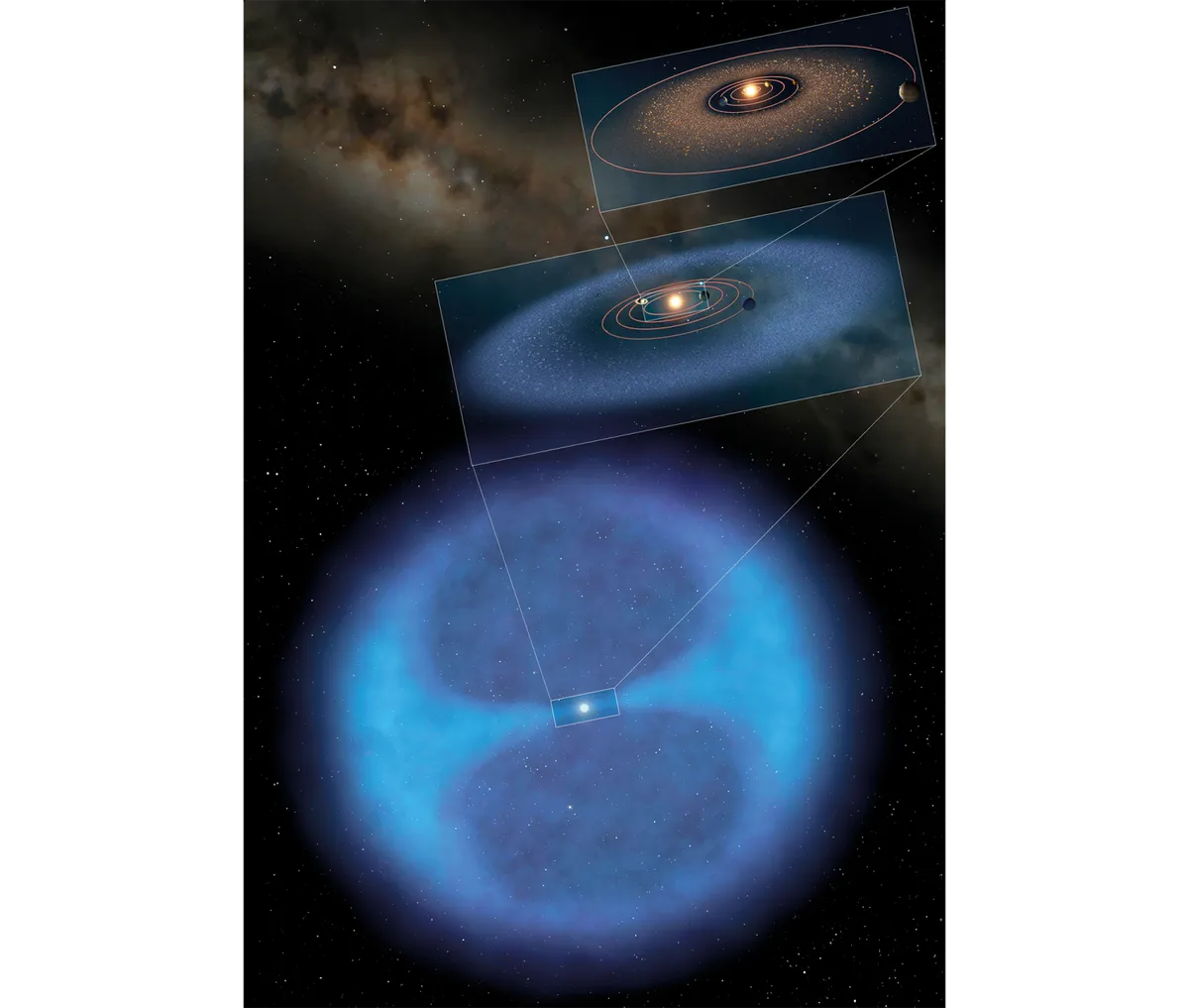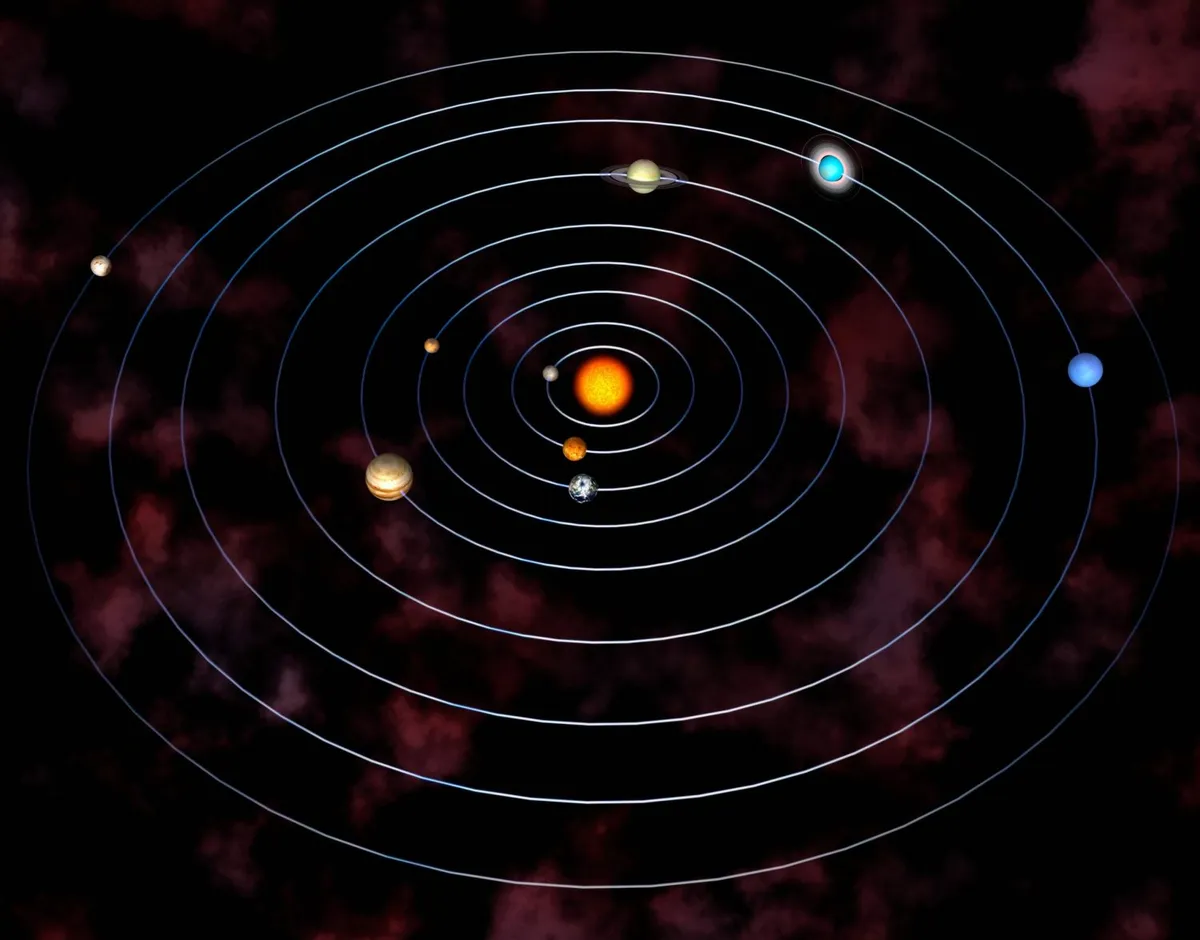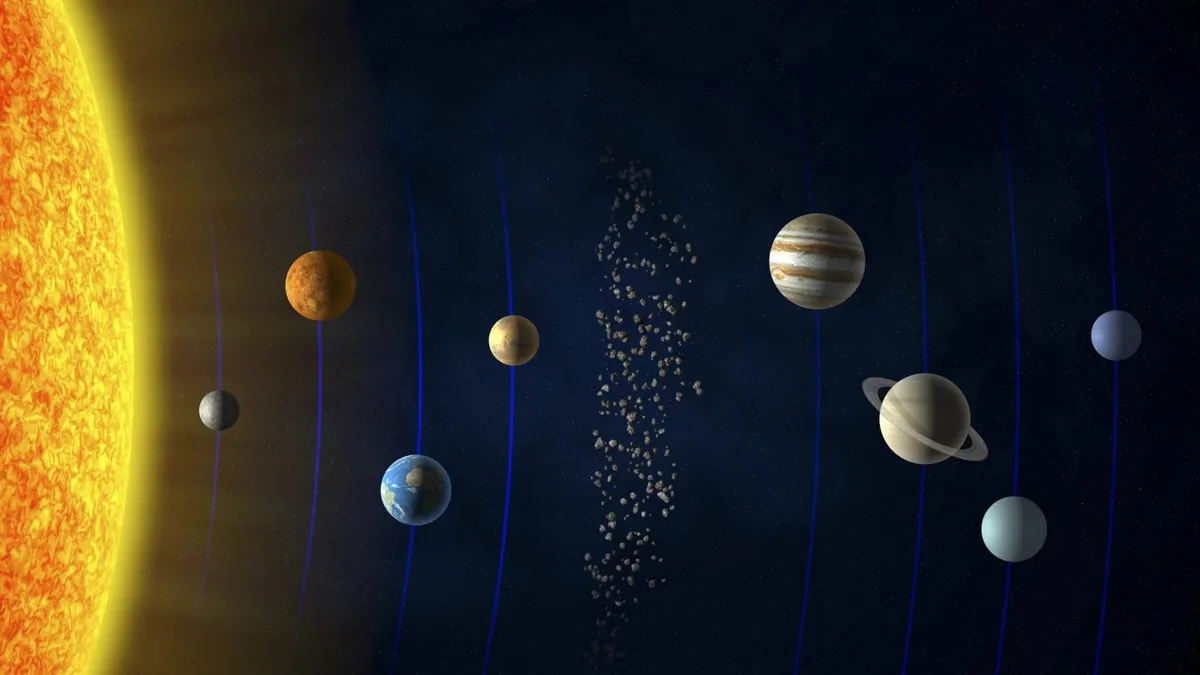Our Solar System is staggeringly big in human terms. If you look through a small telescope at the bright shape of Saturn, you will see a planet that is well over a billion kilometres away. To travel that distance on Earth, you’d need to go all the way around the globe nearly 800,000 times.
Yet the familiar planets are just the innermost jewels of a much larger system containing dwarf planets, comets and more.
Beyond the orbit of Neptune lies the Kuiper Belt, a huge and largely unexplored debris field containing at least three dwarf planets.
Even farther afield is the heliosphere, a bubble in the interstellar gas and dust that fills our Galaxy blown by a fast stream of particles from our Sun.
Farther still is the theorised Oort Cloud, another vast collection of debris, which some astronomers believe could extend trillions of kilometres to the limit of the Sun’s gravitational influence.

How do astronomers measure the size of the Solar System?
It's a daunting task, but astronomers have been trying for a surprisingly long time to accurately measure distance in space. The Ancient Greeks used naked-eye observations to estimate the distance to the Moon and the Sun in terms of Earth radii.
From the 17th century through to the 19th century, observations of parallax – the apparent change of position of an object against the background when viewed from two different positions – allowed increasingly accurate measurements of planetary distances.
More recently, extremely precise distances have been obtained using radar and by calculating orbits from multiple images.

The scale of the Solar System
So how big is the Solar System? To find out, let’s hop aboard a wave of light emitted by the Sun: we can get a sense of the distances involved by paying attention to our travel time.
Astronomers express these distances in astronomical units (AU), a quantity equal to the average distance between Earth and the Sun over the year. One AU is equivalent to roughly 150 million kilometres.
Within a quarter of an hour of leaving the Sun, we have passed the orbits of all the inner, rocky planets: Mercury (0.43 AU) after 3 minutes, Venus (0.7 AU) at 6 minutes, Earth (1 AU) at 8 minutes and Mars (1.5 AU) just 13 minutes into the journey.
Another 15 minutes takes us through the Asteroid Belt, home to the dwarf planet Ceres (2.8 AU), whose orbit we pass at 23 minutes.
We must travel nearly the same distance again to reach the orbit of Jupiter (5.2 AU) at 43 minutes. With increasingly large gaps between planets, it takes almost 3.5 hours to traverse the realm of the gas giants.
The orbit of Neptune (30.1 AU) is 4 hours 10 minutes into our journey.
5.5 hours from the Sun, we enter the Kuiper Belt and continue through it for one hour and 10 minutes. We begin to emerge from the heliosphere into interstellar space around 12 hours into our journey.
Crossing beyond the Oort Cloud, however, could take us as long as a year.

Could humans explore the outer Solar System?
As lightspeed spacecraft are still the stuff of science fiction, it remains extremely difficult for astronomers to explore the outer reaches of the Solar System. Objects orbiting sofar from the Sun reflect very little of its light and are very hard to see even with the biggest telescopes.
Robotic spacecraft travelling at physically achievable speeds take many years to reach the outer Solar System.
Remarkable advances are being made, however. The twin Voyager spacecraft, launched in 1977 to study the giant planets, are still providing data as they plunge ever farther into space.
With the benefit of three decades of technological advance, even more information about the outer Solar System was gained from NASA’s New Horizons mission. Launched in 2006, it arrived at Pluto in 2015, before heading onwards to explore other Kuiper Belt objects.
This article originally appeared in the August 2013 issue of BBC Sky at Night Magazine.